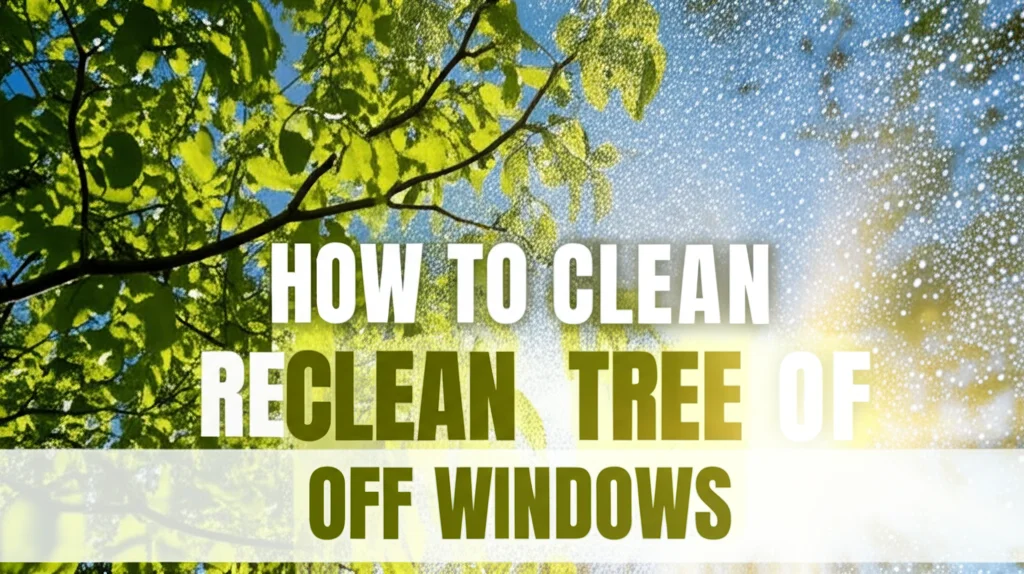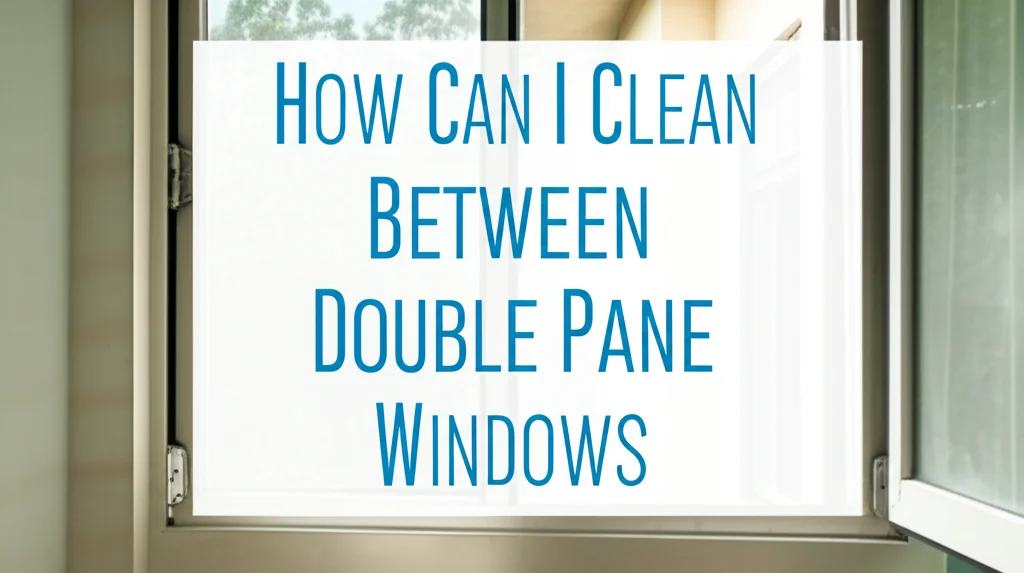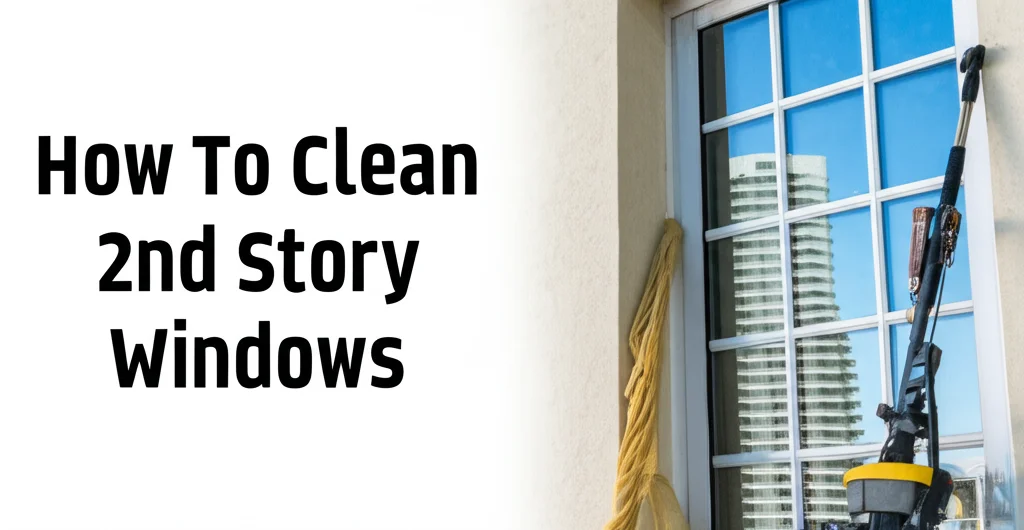· Home Cleaning · 8 min read
How To Clean Tree Sap Off Windows

Tackling Tree Sap: How To Clean Tree Sap Off Windows
Have you ever noticed those sticky, amber-colored spots on your windows after a windy day? That’s tree sap, and it can be a real nuisance. Tree sap isn’t just unsightly; it can also harden and become difficult to remove, potentially scratching your glass if you use the wrong methods. This article will guide you through several effective ways to clean tree sap off windows, leaving them sparkling and clear. We’ll cover everything from simple household ingredients to specialized cleaning solutions, ensuring you have the right tools for the job. Let’s get started and reclaim your view!
Quick Answer: To clean tree sap off windows, gently scrape off excess sap with a plastic scraper, then use rubbing alcohol, vinegar, or a commercial glass cleaner to dissolve the remaining residue. Finish by washing the window with soap and water and drying with a microfiber cloth.
Takeaway:
- Use a plastic scraper to remove bulk sap.
- Alcohol or vinegar effectively dissolves sap residue.
- Finish with a standard window cleaning for a streak-free shine.
Understanding Tree Sap and Why It’s Sticky
Tree sap is a natural substance produced by trees to transport nutrients and protect against insects and disease. It’s essentially the tree’s bloodstream! However, when it lands on your windows, it becomes a sticky problem. The stickiness comes from the sugars and resins within the sap. These components are designed to be adhesive, making them difficult to remove once they’ve dried.
Different types of trees produce sap with varying levels of stickiness and hardness. Pine sap, for example, is notoriously stubborn. Understanding this helps you choose the right cleaning method. Knowing what you’re dealing with is half the battle when it comes to effective cleaning.
Tools You’ll Need for Tree Sap Removal
Before you begin, gather the necessary tools. Having everything on hand will make the process much smoother and more efficient. Here’s a checklist:
- Plastic Scraper: A plastic razor blade or scraper is essential for removing the bulk of the sap without scratching the glass.
- Rubbing Alcohol (Isopropyl Alcohol): This is a powerful solvent that effectively dissolves sap residue.
- White Vinegar: A natural and readily available alternative to rubbing alcohol.
- Glass Cleaner: Your favorite commercial glass cleaner will help finish the job and leave a streak-free shine.
- Warm Water: For rinsing and diluting cleaning solutions.
- Microfiber Cloths: These are ideal for cleaning glass as they don’t leave lint behind.
- Spray Bottle: For applying cleaning solutions.
- Dish Soap: A mild dish soap can help cut through stubborn residue.
The Gentle Approach: Scraping Off Excess Sap
The first step in cleaning tree sap off windows is to remove as much of the hardened sap as possible. This is where a plastic scraper comes in handy. Avoid using metal scrapers or razor blades, as these can easily scratch the glass. Gently angle the scraper and apply steady pressure to lift the sap away from the window.
Work slowly and carefully, especially if the sap is particularly thick or brittle. If the sap is very hard, you can try softening it slightly by warming it with a hairdryer on a low setting for a few seconds. This will make it easier to scrape off. Remember, patience is key to avoid damaging your windows.
Rubbing Alcohol: A Powerful Sap Dissolver
Rubbing alcohol is a highly effective solvent for dissolving tree sap residue. It breaks down the sticky components, making them easier to wipe away. Pour some rubbing alcohol into a spray bottle and generously spray the affected areas of the window. Let it sit for a few minutes to allow the alcohol to penetrate the sap.
After a few minutes, use a clean microfiber cloth to wipe away the dissolved sap. You may need to apply some gentle pressure, but avoid scrubbing vigorously. If the sap is still stubborn, repeat the process. Rubbing alcohol is a great option, but always test it in an inconspicuous area first to ensure it doesn’t damage any window tinting or coatings. You can find more information on window care at https://www.beacleaner.com/how-to-clean-outside-windows-upstairs/.
Vinegar to the Rescue: A Natural Alternative
If you prefer a more natural cleaning solution, white vinegar is an excellent alternative to rubbing alcohol. Vinegar contains acetic acid, which helps to break down the sap’s sticky components. Mix equal parts white vinegar and warm water in a spray bottle. Spray the solution onto the sap-covered areas of the window.
Let the vinegar solution sit for 5-10 minutes to allow it to work its magic. Then, use a clean microfiber cloth to wipe away the dissolved sap. Vinegar is a safe and effective option for most windows, but it’s always a good idea to test it in a small, hidden area first. If you’re looking for more natural cleaning solutions, you might also find information on cleaning floors helpful at https://www.beacleaner.com/how-to-clean-hardwood-floors-with-vinegar/.
Commercial Glass Cleaners: For a Streak-Free Finish
After removing the sap residue with rubbing alcohol or vinegar, it’s time to finish the job with a commercial glass cleaner. This will ensure your windows are sparkling clean and streak-free. Spray the glass cleaner onto the window and wipe it clean with a fresh microfiber cloth.
Pay attention to the edges and corners of the window to ensure you remove all traces of sap and cleaning solution. For particularly stubborn streaks, try using a second clean, dry microfiber cloth to buff the glass. A good glass cleaner will leave your windows looking crystal clear.
Preventing Future Sap Buildup
Once you’ve successfully cleaned the tree sap off your windows, you’ll want to prevent it from happening again. Here are a few tips:
- Trim Nearby Trees: Regularly trim branches that overhang your windows to reduce the amount of sap that can fall onto the glass.
- Regular Cleaning: Clean your windows regularly, even if they don’t appear to be dirty. This will prevent sap from building up and becoming difficult to remove.
- Protective Coatings: Consider applying a protective coating to your windows. These coatings can help repel sap and make it easier to clean off.
- Car Wax: Believe it or not, applying a thin coat of car wax to your windows can create a barrier that prevents sap from sticking.
Dealing with Dried-On Sap: Extra Tips
Sometimes, you might not notice the tree sap until it’s completely dried and hardened. This can make it even more challenging to remove. Here are a few extra tips for dealing with dried-on sap:
- Warm, Soapy Water: Soak a cloth in warm, soapy water and place it over the sap for 10-15 minutes to soften it.
- Ice: For very stubborn sap, try applying an ice pack to the area for a few minutes to freeze it. This can make it more brittle and easier to scrape off.
- Patience: Don’t rush the process. Take your time and work carefully to avoid scratching the glass.
If you’re dealing with other tough cleaning challenges around the house, you might find this article on removing baking soda residue helpful: https://www.beacleaner.com/how-to-remove-baking-soda-residue-from-carpet/.
FAQ: Your Tree Sap Cleaning Questions Answered
Q: Will tree sap scratch my windows? A: Yes, if you try to remove hardened sap with abrasive tools like metal scrapers. Always use a plastic scraper and gentle cleaning solutions to avoid scratching the glass.
Q: Can I use dish soap to clean tree sap? A: Yes, a mild dish soap mixed with warm water can help loosen sap residue, but it’s best used in combination with rubbing alcohol or vinegar for more effective removal.
Q: Is there anything I shouldn’t use to clean tree sap? A: Avoid using abrasive cleaners, steel wool, or harsh chemicals that could damage your windows.
Q: How often should I clean tree sap off my windows? A: Clean your windows as needed, especially during seasons when trees are actively producing sap. Regular cleaning prevents buildup and makes removal easier.
Q: What if the sap is on tinted windows? A: Always test any cleaning solution in an inconspicuous area of tinted windows first to ensure it doesn’t damage the tint.
Conclusion: Sparkling Windows are Within Reach!
Cleaning tree sap off windows doesn’t have to be a daunting task. By following these simple steps and using the right tools, you can easily remove sap residue and restore your windows to their sparkling best. Remember to start with a gentle scraping, followed by a solvent like rubbing alcohol or vinegar, and finish with a commercial glass cleaner for a streak-free shine.
Regular cleaning and preventative measures, such as trimming nearby trees, will help keep your windows sap-free for longer. Don’t let tree sap obstruct your view – take action today and enjoy clear, clean windows! If you’re looking for more cleaning tips and tricks, be sure to explore our other articles, like this one on how to clean vinyl plank flooring: https://www.beacleaner.com/how-to-clean-vinyl-plank-flooring/.




